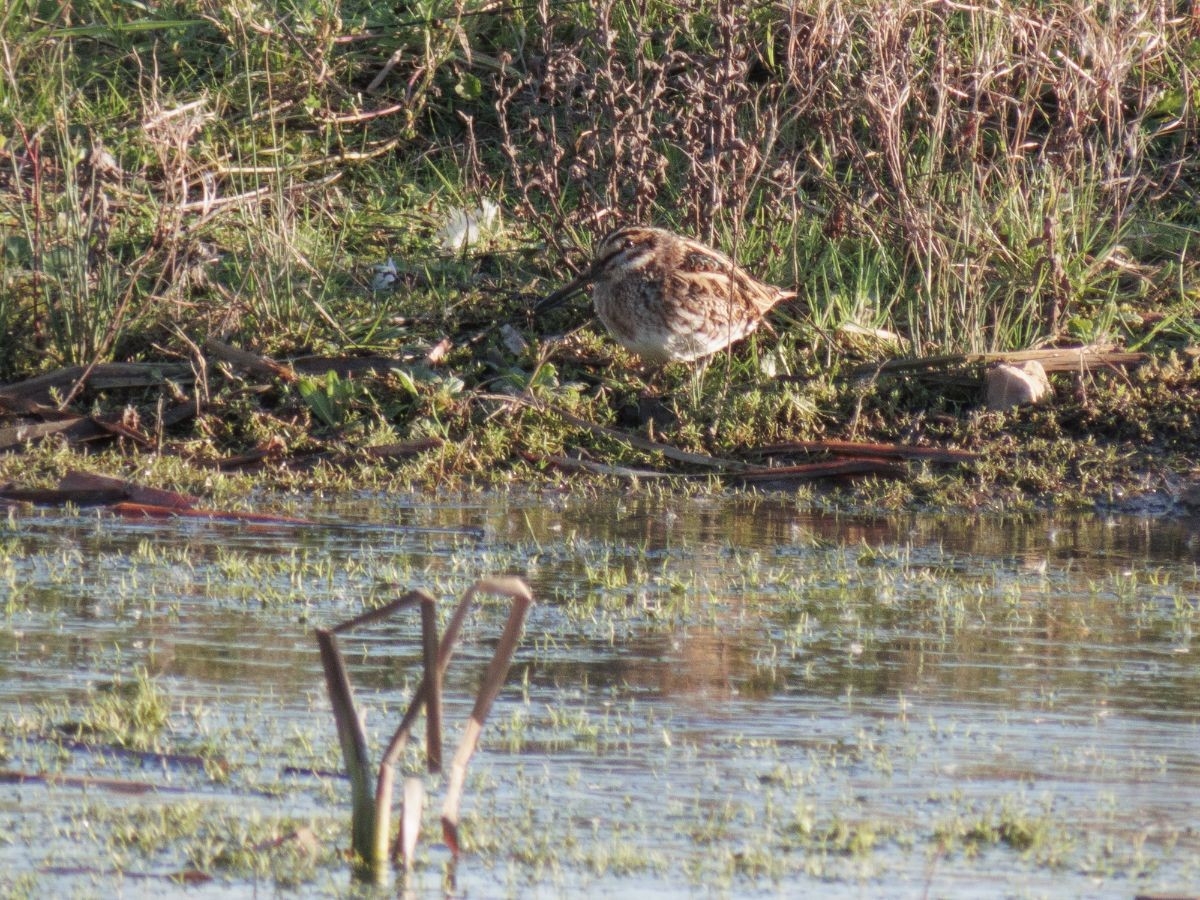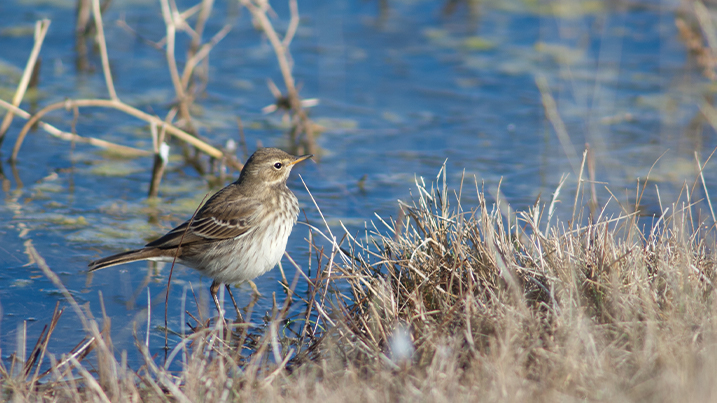Wildlife sightings for 9th October 2016
5 Snipe - grazing marsh, main lake
2 Stonechat - grazing marsh
1 Pintail - main lake
5+ Meadow Pipit - grazing marsh
8 Chiffchaff - site count
1 Peregrine - perched on the hospital
October bird highlights: Wheatear, Stonechat, Pintail, Kingfisher, Water Rail, Peregrine, Snipe, Yellow Wagtail, Siskin.
Autumn migration continues with some great sightings of passage waders (such as Green Sandpiper and Dunlin), a long-staying Garganey, passage Warblers and Whinchats. The grazing marsh is being kept fairly wet to attract species like Black-tailed Godwit and Snipe, and migrating passerines may turn up anywhere on the short-cut banks and fencelines this month. Hirundine species will continue to move through the country southwards and we can expect a lot more Warblers on days when the weather is perfect for migration.
Flowering plants: Autumn Crocus, Yarrow, Fleabane, Bird’s Foot Trefoil, Field Scabious.
Fungi: (found on early October foray) Orange bonnet (nr Otter enclosure); Brown birch bolete; Candlesnuff; Hazel bracket; Cushion bracket (on old cherry plum); Brown roll-rim (Wooded Wetlands area); Earthfan species – Thelephora penicillata (nationally uncommon); Deceiver (nr reeds opposite willow wigwams); Bleached brittlegill; Chicken of the woods (swamp forest on old bog oak from Martin Mere); Beefsteak fungus; Grayling bracket and Smoky bracket (both on left through wildside gates); Conocybe ‘conecap’ (on left through wildside gates); Purple bramble rust (Summer Route); Yellowing curtain crusts; Blushing rosette; Giant puffballs; Pancake crust (on bridge near turn off to Wildside hide. nationally rare); Bearded milkcap (Wetland Living area and just before Succession Trail); Birch mazegill (on birch stump in log garden); Turkey tails (near Dulverton Hide bridge); Meadow puffballs; Oak mazegill (on bench near Wader Scrape hide); Milkcap species Lactarius controversus (nationally uncommon and associated with willows in damp / wet woodland. only our second ever record); Fairy Inkcap.
Bees: Tree Bumble, Large Red-tailed Bumble, Early Bumble, White-tailed and Buff Bumbles, Common Carder, Tawny Mining, Early Mining, Clarke’s Mining, Gooden’s Nomad, Grey-patched Mining, Red Mason, Hairy-footed, Honey, Yellow Loosestrife Bee, Large-headed Resin Bee, Short-fringed Mining Bee.
Butterflies: Red Admiral.
Dragonflies: Common Darter, Migrant Hawker.
Beetles: Common Red Soldier Beetle (tall grassland around Sheltered Lagoon), 7-spot Ladybird, Harlequin Ladybird, Oedemera lurida (e.g. Compositae flowers), Donacia simplex (and related species on Branched Bur-reed), Rosemary Beetle (on Lavender in Sustainable Gardens), Red Poplar Leaf Beetle (on poplar sapling leaf Sheltered Lagoon), Viburnum Leaf Beetle (on Guelder-rose beside Bog Garden), Longhorn Beetle.
Sawflies: Social Pear Sawfly, Rhogogaster viridis, Alder Sawfly, Loosestrife Sawfly, Birch Sawfly.



